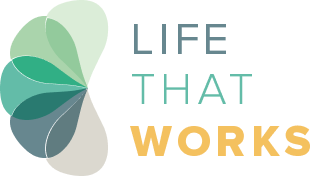
Are you curious about how to heal inner childhood wounds that continue to influence your life in profound ways? Our earliest experiences shape who we are, leaving imprints that persist into adulthood. These hidden scars often reveal themselves during major life changes or transitions when our sense of security is most vulnerable. Understanding and addressing these deep-rooted issues can be the key to unlocking a more fulfilling, balanced life. Keep reading to learn more about inner child healing and ways we can, as adults, “re-parent” our inner child who might not have gotten their needs met.
What Is the Concept of the Inner Child?
Imagine, nestled within you, a vibrant, curious, and emotional being — this is your inner child. It’s not just a metaphorical concept but a powerful symbol of your deepest feelings, memories, and desires from childhood. This inner child holds the key to your joy, creativity, and spontaneity, embodying the purest form of your essence before the world layered you with responsibilities, fears, and societal norms.
Embracing and nurturing this part of yourself is like unlocking a treasure chest of potential for growth and self-discovery. By acknowledging and caring for your inner child, you pave the way for a life filled with more authenticity and a deeper connection to the world around you. It’s about rediscovering those parts of you that might have been lost or forgotten but have always been there, waiting to add color, warmth, and wonder to your existence.
How Do I Know If My Inner Child Is Damaged?
Trauma doesn’t always have to mean big events. As humans, we all go through traumas; some “with a big T” and some “with a little t” that happen along our journey.
The five core emotional wounds we experience as children are rejection, abandonment, humiliation, betrayal, and injustice. And as these experiences suggest, we can see how small traumas surround us as we come to grow up. The “little” ones can sneak up on us and often go completely unnoticed until we grow up and find ourselves stuck repeating the same old patterns.
These traumas could reveal themselves in your relationships, where you find yourself trapped in cycles of seeking approval or love in ways that leave you feeling empty. Perhaps it’s in the harsh words you use on yourself, a reflection of criticism you internalized long ago. Or maybe it’s the dreams you’ve abandoned because someone once told you they were impossible.
These are the opportunities to grow, change, and transform as we evolve, and we don’t have to be afraid of touching those parts of ourselves. We can liberate them by bringing them into the light. The inner child in us knows what we need the very most and offers that childlike wisdom we lose as we grow up to be “adults.”
How to “Re-Parent” Yourself to Experience Inner Child Healing
When it comes to how to heal inner childhood wounds, the idea is to “re-parent” our younger child who might not have gotten their needs met. Our painful moments and told messages get stored in our psyche, from which we subconsciously operate.
First, you must acknowledge your inner child’s presence. Recognize that your inner child exists and plays a role in your adult life. This awareness is the first step toward healing. During this process, give yourself permission to feel all emotions, acknowledging them without judgment. Let your inner child know that it’s okay to express sadness, anger, fear, or joy.
To begin to re-parent your younger self, speak to your inner child as you would to a young child who needs comfort. Use soothing words to reassure them that they are safe, loved, and worthy. While doing so, identify and challenge negative beliefs. Reflect on the negative messages or beliefs you internalized as a child. Challenge these beliefs and replace them with positive affirmations that affirm your value and strengths.
7 More Ways to Connect With Your Inner Child
I often ask clients about what they enjoyed playing and imagining as a child. It is a beautiful way to loosen the grip of responsibilities we carry as adults and remember our creative, wild imagination that is desperate to have a voice. Here are seven more ways to connect with your inner child and begin the transformative journey of inner child healing.
1. Write a Letter to Your Inner Child
Writing a letter to your inner child is a powerful tool for healing and self-discovery. This practice allows you to communicate directly with the younger version of yourself in a compassionate and understanding way. Start by recalling memories or feelings from your childhood, both positive and negative, and address them in your letter. Acknowledge any pain, offer comfort, and express the love and support that your inner child needed at that time. This act can be profoundly therapeutic, helping to release old wounds and fostering a deeper connection with yourself.
2. Engage in Guided Visualizations
Start by envisioning your inner child, picturing a younger version of yourself at an age when you might have encountered emotional wounds or had needs that went unfulfilled. Imagine this child version of you standing directly before you as if brought to life from your memories. This visualization process creates a bridge to moments of vulnerability, allowing for a heartfelt connection and the opportunity to address and heal past hurts.
3. Try Proprioceptive Writing
Journaling offers a safe space to explore your feelings, touching into your subconscious thoughts and wisdom. Dedicate time to write. It could be about experiences from your childhood, noting how they’ve shaped your beliefs and behaviors. It could be about how your inner child feels today and what they need to heal. By diving into your subconscious thoughts, you’ll find a deeper connection and sense of wisdom with which you can re-parent your inner child.
4. Reframe Negative Thoughts
Our inner critic often echoes negative messages we received in childhood. To reconnect with your inner child, it’s vital to identify and reframe these negative thoughts. When you catch yourself engaging in self-criticism, pause and question the validity of these thoughts. Stay curious about alternative perspectives. This shift in mindset encourages a more compassionate relationship with yourself, mirroring the nurturing environment your inner child deserves.
5. Practice Self-Compassion
Self-compassion is treating yourself with the same kindness, concern, and support you’d offer a good friend. When facing difficulties or when you notice self-judgment creeping in, practice self-compassion by acknowledging your feelings without judgment and offering yourself understanding and comfort. Remind yourself that everyone makes mistakes and that you are worthy of love and compassion. Cultivating self-compassion helps heal your inner child by creating an internal atmosphere of love and acceptance.
6. Stay Curious
Curiosity is a natural trait of children, driving them to explore the world around them with wonder and awe. Rekindle this sense of curiosity by allowing yourself to explore new hobbies, ideas, or places without preconceived notions or judgments. Ask questions, seek out new experiences, and allow yourself to be surprised. This approach not only enriches your life with new insights and joys but also honors your inner child’s desire for discovery and learning.
7. Get Creative — Learn to “Play” as an Adult
Creativity and play are essential aspects of childhood that often get lost in adulthood. Whether it’s painting, dancing, writing, or playing a musical instrument, these activities allow you to express yourself freely and joyfully. Don’t be afraid to get messy creating. Tap into the right side of your brain — the creative and imaginative side! Play isn’t just for children; it’s a vital part of self-expression and stress relief for adults too, offering a fun way to connect with your inner child and spark joy in your daily life.
We all have inner childhood wounds to some extent, even if they don’t manifest often nowadays. And these strategies are a great way to start. However, if you believe your inner childhood trauma is significantly impacting your ability to lead a fulfilling life, maintain healthy relationships, or manage emotions effectively, it might be time to seek additional support.
Re-Parent Your Inner Child To Navigate Life Transitions More Effectively
As we’ve explored, the echoes of our childhood experiences deeply influence how we navigate the ebbs and flows of life. And even more so during significant transitions. These early imprints shape our reactions, our resilience, and our capacity to embrace change with grace and confidence. It’s clear that by reconnecting with our inner child, we can uncover the roots of our fears and anxieties, transforming them into strengths that launch us forward.
As a Life Transitions Coach, I am here to guide you through this deeply personal and transformative journey. Together, we will work to understand and heal your inner child, equipping you with the tools to face life’s transitions with a newfound sense of empowerment and emotional agility. If you’re ready to embark on this journey, get in touch today to learn more about the coaching process.

Leave a Reply